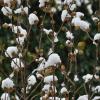

Table of contents
- cost per cubic metre
- Recognize differences in quality - Here's how
- Uniform grain
- Minimum proportion of foreign matter
- freshness
- Are there free alternatives?
- Chinese reed chaff
- lawn clippings
- autumn leaves
- Clippings after hedge trimming
- Weak ground cover
Bark mulch at a bargain price has sometimes not even remotely earned the name. The legislator does not give a precise definition of the composition, which leads to considerable differences in the quality of the offer. The price should therefore not be the sole criterion for the purchase. This guide provides you with information about the relationship between quality characteristics and prices of bark mulch, including the costs per cubic metre. Bargain foxes among home gardeners benefit from our tips for free alternatives.
cost per cubic metre
Bark mulch is available in different grain sizes and colors. Basic products usually come from native conifers such as spruce and pine. The bark of pines, oaks or other valuable tree species is used in high-quality products. The costs per cubic meter are therefore closely related to the selected product variant. The following table gives a general overview of the cost structure:
- Classic bark mulch, brown, fine grain 0 to 20 mm: from 107.50 euros per m³
- Classic bark mulch, brown, medium grain 0 to 40 mm: from 69.80 euros per m³
- bark mulch with nitrogen addition, brown, medium grain size 0 to 40 mm: from 90.00 euros per m³
- pine mulch, natural brown, coarse grain size 60 to 120 mm: from 150.00 euros per m³
- bark mulch without tannic acid, red-brown, coarse grain size 0 to 40 mm: from EUR 64.00 per m³
- rose mulch, brown, fine grain 0 to 20 mm: from 188.60 euros per m³
- pine bark mulch, dark red to reddish brown, medium-fine grain size 15 to 30 mm: from 240.00 euros per m³
- decorative mulch, nut brown, stone grey, golden yellow or brick red, grain size 10 to 40 mm: from 339.20 euros per m³
The prices mentioned refer to bark mulch that can be supplied all year round from specialist retailers. Promotional offers from discounters can be significantly lower, but are only available for a few days up to a maximum of one or two weeks.
Tip:
Bark mulch only develops its effect as a natural source of humus over the years. In the first stage of decomposition, mulch primarily removes nitrogen from the soil. The distribution of fresh bark mulch in the garden therefore goes hand in hand with the administration of a nitrogen-rich fertilizer, such as horn shavings or nettle manure.
Recognize differences in quality - Here's how

With the above overview of bark mulch prices, this guide would have come to an informative conclusion if the legislature had not failed to set clear quality criteria. In fact, there is no specification as to what bark mulch should be composed of. Strictly speaking, the product does not even have to contain tree bark, but can contain 100 percent foreign substances as long as they are of plant origin. The costs per cubic meter are therefore only an indication for the purchase of bark mulch. For your orientation, we have compiled important positive characteristics as distinguishing criteria below:
Uniform grain
High-quality bark mulch consists of uniformly sized pieces of bark with a grain size of 16 to 25 mm. Smaller pieces decompose too quickly, resulting in short-term effective weed suppression. Manufacturers of cheap products do without sorting for cost reasons. In this case, the sacks contain a mixture of fine material and thick chunks. This creates an uneven appearance and quickly leads to gaps in the mulch carpet, where small-grain bark mulch decomposes prematurely.
Minimum proportion of foreign matter
In principle, bark mulch should consist exclusively of tree bark. A small amount of green compost or wood chips hardly affects the quality. Since there are of course no limit values for the proportion of foreign substances, some manufacturers use this gap to the limit of what is tolerable. Undesirable components such as branches, stones, plastic parts and even glass splinters have been detected in discounter offers. It does not follow from this that cheap bark mulch has to be of poor quality. The RAL quality mark ensures buyer security when purchasing bark mulch. The manufacturers of the "Gütegemeinschaft Substrate für Pflanzen" undertake to comply with fundamental specifications, such as a low proportion of foreign matter, uniform grain size and maximum hygiene.
freshness
You can sniff out the third quality feature. Bark mulch of impeccable quality exudes a pleasant scent of fresh forest soil. A musty smell, on the other hand, reveals a product of inferior quality with a high proportion of damp earth, which is often already moldy.
Tip:
All efforts to purchase bark mulch with the ideal price/performance ratio will come to nothing if the material is applied improperly. Bark mulch can only fulfill its function as a weed inhibitor if it is spread in a layer 5 to 8 cm thick.
Are there free alternatives?
Bark mulch prices are constantly increasing. There is no end in sight to the explosion in costs, since the problem is closely linked to the dying forests. Even today, the costs per cubic meter are almost unbearable for many home gardeners. Consequently, the focus is on free alternatives to bark mulch. The following options have the potential to replace tree bark as a mulch material in the garden:
Chinese reed chaff

Majestic ornamental grasses are very popular as privacy screens. The multifaceted varieties of Chinese reed (Miscanthus sinensis) are leading in this respect in private garden design. The care program for the grass includes a radical pruning up to a hand’s breadth above the ground. With the clippings you have a free alternative to bark mulch. Miscanthus chaff reliably cover the soil, suppress annoying weeds from a layer height of just 5 cm, are pH-neutral and do not smell. The edges of the grasses are still razor-sharp even when shredded, which keeps voracious snails at bay.
lawn clippings
After each mowing, the collection basket on the lawn mower is filled to the brim with free mulching material. Lawn clippings are the ideal alternative to bark mulch, especially in the vegetable patch. Fresh lawn clippings should be allowed to dry for a few days before use to prevent mold. When the grass in the bed later withers completely, it forms a natural protective layer against weeds and keeps the soil warm and slightly moist for longer.
autumn leaves
A free alternative to bark mulch falls off deciduous trees and shrubs in large quantities every year. Fall foliage is perfect as a mulch for any plants whose natural habitat is in the forest or along clearings. The dead leaves decompose over the course of the year and enrich the soil with valuable humus. Before using as mulch, autumn leaves should go through a rotting phase for about 2 weeks. Then distribute the leaf mulch in the bed, under hedges, shrubs and trees. The leaves of oak, chestnut or walnut trees are coarse in structure and decompose very slowly. This foliage should therefore be shredded in the shredder before being used as mulch.
Tip:
Oak leaf mulch lowers soil pH. Therefore, use autumn leaves from oak trees primarily as a mulch under shrubs with a preference for acidic soil, such as rhododendrons.
Clippings after hedge trimming
Fast-growing deciduous hedges need regular pruning to keep them looking neat. The clippings are ideal as a free bark mulch replacement. Twigs that are too large and thicker branches are shredded using a garden shredder.
Weak ground cover
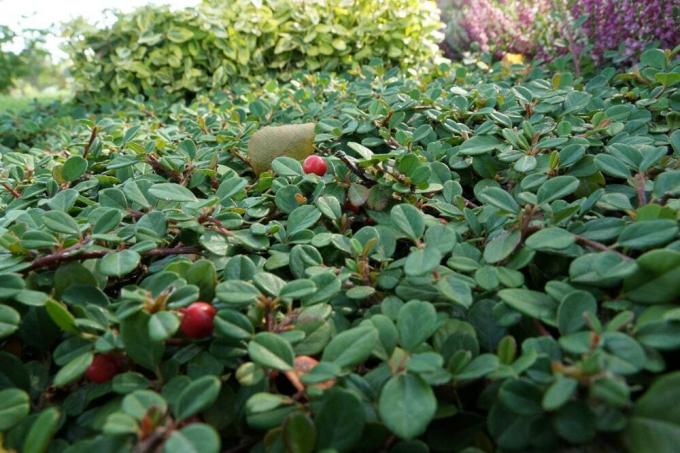
In the course of rising bark mulch prices, the ecologically more sensible method of planting ground cover for weed inhibition is coming into focus. The focus is on perennials with low nutrient consumption and creeping, stoloniferous growth. Evergreen plant species ensure a well-groomed, weed-free appearance even during the cold season. The natural alternative to bark mulch is available to you free of charge if you harvest and sow the ripe seeds from groundcover plants or collect cuttings for propagation. The following species and varieties do the job with flying colors:
- Cranesbill (Geranium) with more than 300 species for almost every soil condition
- Small periwinkle (Vinca minor), easy care groundcover with evergreen foliage and pretty spring blooms
- Carpet phlox, cushion-like habit with evergreen, needle-like leaves, flowers in May
The easy-care star moss (Sagina subulata) is almost as hardwearing as bark mulch. Thanks to diligent self-sowing, the pretty ground cover makes a free contribution to the uninterrupted suppression of weeds on its own. On the other hand, bark mulch has to be refreshed every 2 to 3 years, which means you have to dig deep into your wallet on a regular basis.
 garden editorial
garden editorial I write about everything that interests me in my garden.
Learn more about mulch & bark mulch

Where can I get bark mulch for free? | 20 cheap sources of supply
Bark mulch for free is within reach if important sources of information are known. It is thanks to the Internet that generous donors of free bark mulch can be found with little effort. If the search comes to nothing, it is worth taking a look at this hand-picked list of 20 cheap sources of supply.

Pine mulch - an alternative type of mulch to bark mulch?
In the past, bark mulch made from native coniferous wood was almost exclusively used for mulching. In recent years, however, pine bark mulch has been on the rise. Since pine mulch has some differences to pine mulch, it can definitely be considered as an alternative to domestic mulch made from pine and pine.
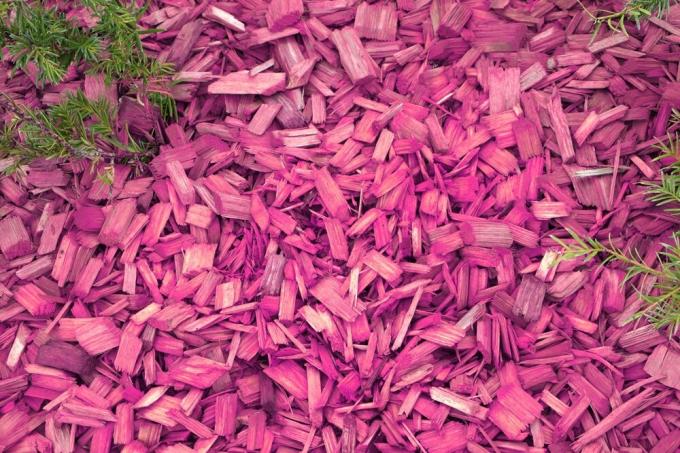
Colored bark mulch: colorful decorative mulch | Where buy? Prices
Colored bark mulch is a visual highlight and can be used in many areas of the garden for decorative purposes. In addition, bark mulch protects the plants against weather influences and suppresses the growth of weeds. In addition, the plants are supplied with additional nutrients over a long period of time.
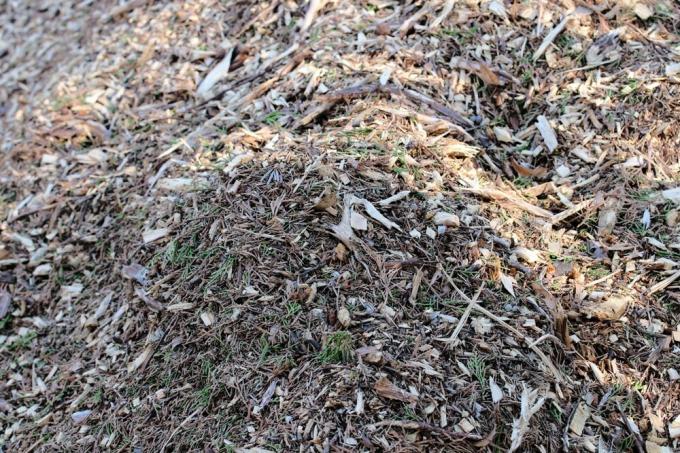
Bark mulch against weeds: how does mulch help to protect against weeds?
Mulch is becoming increasingly popular in the garden. This includes above all the bark mulch, which is made from waste from the wood industry. Bark mulch can be used for a variety of purposes, including weed suppression. How to do this is explained in this guide.

What to do with the lawn clippings? | Lawn mulch as fertilizer for beds & Co
Lawn mowing is annoying - mainly because you never really know where the grass clippings should go. This clippings are a valuable fertilizer that can be used in a variety of ways in the garden. Here's what you need to know about it.
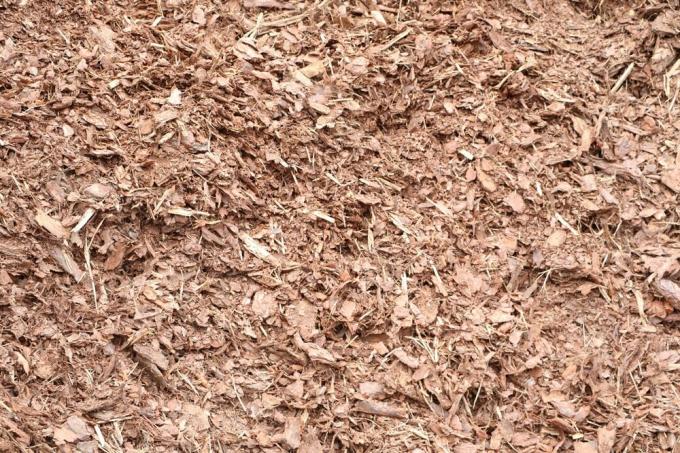
bark humus | Properties & uses of bark compost
Bark humus, often also called bark compost, is a fine thing in two senses. Fine because it is obtained from heavily crushed coniferous bark. Fine because it enriches plant soil with its ingredients. What are its advantages and how can the floor benefit from them?


